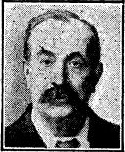
Hexham is a constituency in Northumberland represented in the House of Commons of the UK Parliament since 2024 by Joe Morris of the Labour Party. As with all constituencies, the constituency elects one Member of Parliament (MP) by the first past the post system of election at least every five years.

Jarrow was a constituency represented in the House of Commons of the UK Parliament from 2019 until its abolition for the 2024 general election by Kate Osborne of the Labour Party.

Newcastle upon Tyne Central was a constituency represented in the House of Commons of the UK Parliament from 2010 until its abolition for the 2024 general election by Chi Onwurah of the Labour Party. As with all constituencies since 1950, the constituency elected one Member of Parliament (MP) by the first past the post system of election at least every five years.

Newcastle upon Tyne East and Wallsend is a constituency represented in the House of Commons of the Parliament of the United Kingdom. It elects one Member of Parliament (MP) by the first past the post system of election.

Newcastle upon Tyne North is a constituency represented in the House of Commons of the UK Parliament since 2010 by Catherine McKinnell of the Labour Party.

Tyne Bridge was a parliamentary constituency in the north east of England, represented in the House of Commons of the Parliament of the United Kingdom, from 1983 until 2010. It elected one Member of Parliament (MP) by the first past the post system of election.

Tynemouth is a constituency in Tyne and Wear represented in the House of Commons of the UK Parliament since 1997 by Sir Alan Campbell, a member of the Labour Party.

North Tyneside was a constituency represented in the House of Commons of the UK Parliament since its creation in 1997 until its abolition for the 2024 general election by members of the Labour Party.

Wansbeck was a constituency in Northumberland in the House of Commons of the UK Parliament. It was represented from its 1983 re-creation until its abolition for the 2024 general election by members of the Labour Party.

Stoke-on-Trent North is a constituency represented in the House of Commons of the UK Parliament by David Williams, a member of the Labour Party.
Newcastle City Council elections are generally held three years out of every four, with a third of the council being elected each time. Newcastle City Council is the local authority for the metropolitan borough of the Newcastle upon Tyne in Tyne and Wear, England. Since the last boundary changes in 2018, 78 councillors have been elected from 26 wards.

Houghton and Sunderland South is a constituency in Tyne and Wear represented in the House of Commons of the Parliament of the United Kingdom. Since its creation in 2010, the seat has been represented by Bridget Phillipson of the Labour Party, who currently serves as Secretary of State for Education under the government of Keir Starmer.

Heaton is a district and suburb in the city of Newcastle upon Tyne, in Tyne and Wear, England, two miles east of the city centre. It is bordered by the neighbouring areas of Walkergate to the east, Jesmond to the north west, Byker to the south, and Sandyford to the west. The name Heaton means high town, referring to the area "being situated on hills above the Ouseburn, a tributary of the River Tyne." The area is divided into South Heaton, and High Heaton, representing the north, respectively. For city council elections, the area is split between three wards: Heaton, Manor Park and Ouseburn. Until 1974 it was in Northumberland.

The Ouseburn is a small river in Newcastle upon Tyne, England that flows through the city into the River Tyne. It gives its name to the Ouseburn Valley and the Ouseburn electoral ward for Newcastle City Council elections.
Wallsend was a parliamentary constituency centred on Wallsend, a town on the north bank of the River Tyne in North Tyneside.

The 1973 Tyne and Wear County Council election was held on 12 April 1973 as part of the first elections to the new local authorities established by the Local Government Act 1972 in England and Wales. 104 councillors were elected from 95 electoral divisions across the region's five boroughs. Each division returned either one or two county councillors each by First-past-the-post voting for a four-year term of office. The election took place ahead of the elections to the area's metropolitan borough councils, which followed on 10 May 1973.

The 2021 Newcastle City Council election took place on 6 May 2021 to elect members of Newcastle City Council in England. This was on the same day as other local elections across the United Kingdom.
The ceremonial county of Tyne and Wear was created under the Local Government Act 1972, which came into effect on 1 April 1974, comprising the urban areas around the mouths of the Rivers Tyne and Wear, previously parts of the historic counties of Northumberland and Durham. It returned 12 MPs to the UK Parliament from 2010 to 2024. Under the 2023 review of Westminster constituencies, coming into effect for the 2024 general election, the boundary commission proposed two cross-county boundary seats with Northumberland and one with Durham, in addition to 10 constituencies wholly within the county boundaries,.



















